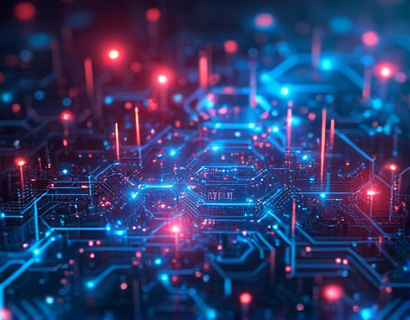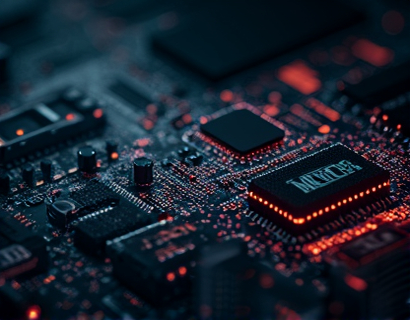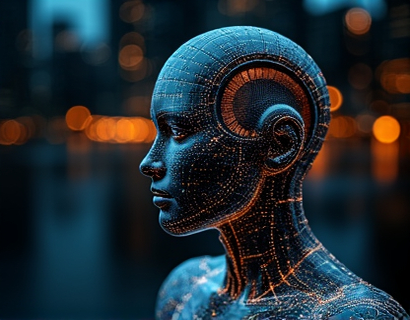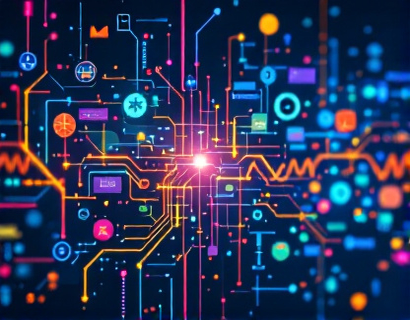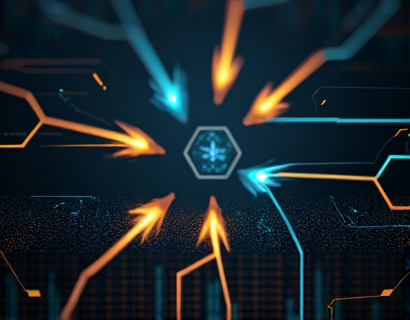Unlocking the Future: How Crypto and AI Are Transforming Digital Solutions
The intersection of cryptocurrency and artificial intelligence (AI) is giving birth to a new era of digital solutions, one that promises to redefine efficiency, security, and user experience. This transformative period is marked by the integration of decentralized technologies and advanced AI algorithms, creating a synergy that is reshaping the digital landscape. This article explores the profound impact of these technologies, focusing on how they are revolutionizing app development and enhancing user experiences across various sectors.
The Rise of Decentralized Applications
Decentralized applications, or dApps, are at the forefront of this technological revolution. Unlike traditional applications that rely on centralized servers, dApps operate on blockchain networks, ensuring greater transparency, security, and user control. The decentralized nature of these applications eliminates single points of failure, making them more resilient to cyber attacks and data breaches.
The development of dApps has been significantly accelerated by the advent of smart contracts. Smart contracts are self-executing contracts with the terms of the agreement directly written into code. They automate and enforce contractual obligations without the need for intermediaries, reducing costs and increasing efficiency. Platforms like Ethereum have been pivotal in popularizing smart contracts, but the concept is expanding to other blockchain networks as well.
Enhanced Security and Privacy
One of the most compelling advantages of dApps is their enhanced security and privacy features. Blockchain technology ensures that all transactions are recorded in a tamper-proof ledger, providing an immutable record of all activities. This level of transparency builds trust among users and reduces the risk of fraudulent activities. Additionally, the use of cryptographic techniques ensures that user data is securely stored and transmitted, protecting against unauthorized access.
Privacy is another critical aspect where blockchain and AI converge to offer superior solutions. Zero-knowledge proofs, a cryptographic method, allow users to prove the validity of a statement without revealing any additional information. This technology, combined with AI-driven encryption methods, can create highly secure communication channels and data storage solutions, ensuring that sensitive information remains confidential.
AI-Driven Innovations in dApps
AI is playing an increasingly crucial role in the development and functionality of dApps. Machine learning algorithms can analyze vast amounts of data to provide insights and predictions, enhancing the decision-making capabilities of these applications. For instance, AI-powered dApps can offer personalized recommendations based on user behavior, improving user engagement and satisfaction.
Natural Language Processing (NLP) is another AI subset that is transforming dApps. NLP enables applications to understand and respond to human language, making interactions more natural and intuitive. Chatbots and virtual assistants integrated into dApps can provide 24/7 customer support, answer queries, and guide users through complex processes, all while maintaining a human-like conversation.
Automated Processes and Efficiency
The integration of AI in dApps also leads to more automated processes, reducing the need for manual intervention. AI can automate routine tasks such as data entry, content moderation, and even complex financial transactions. This automation not only speeds up operations but also minimizes human errors, leading to higher accuracy and reliability.
Furthermore, AI can optimize resource allocation and network performance. By analyzing real-time data, AI algorithms can dynamically adjust parameters to ensure optimal performance, reduce latency, and enhance user experience. This adaptability is particularly valuable in decentralized networks where resources are distributed across multiple nodes.
AI-Enhanced User Experiences
The combination of AI and blockchain is not only transforming backend processes but also revolutionizing user experiences. Personalization is a key area where AI shines, enabling dApps to tailor content and services to individual preferences. By leveraging user data and behavior patterns, AI can create customized experiences that keep users engaged and satisfied.
User interface (UI) design is another area benefiting from AI. AI-driven design tools can generate responsive and adaptive interfaces that optimize for various devices and screen sizes. These tools can also suggest design improvements based on user feedback and usage patterns, ensuring that dApps remain user-friendly and accessible.
Enhanced Accessibility
AI technologies are making dApps more accessible to a broader audience. For users with disabilities, AI-powered features such as voice recognition, text-to-speech, and image description can significantly enhance usability. These inclusivity measures ensure that everyone can benefit from the advancements in digital solutions, breaking down barriers and promoting equal access to technology.
Moreover, AI can help bridge the language gap by providing real-time translation services within dApps. This feature is particularly useful for global applications, enabling users from different linguistic backgrounds to interact seamlessly.
The Synergy of Crypto and AI in Financial Services
The financial sector is one of the most impacted areas where crypto and AI are converging. Decentralized finance (DeFi) platforms are leveraging AI to offer innovative financial products and services. AI-driven algorithms can analyze market trends, predict price movements, and optimize trading strategies, providing users with data-driven insights to make informed decisions.
Smart contracts in DeFi applications ensure that transactions are executed transparently and securely, reducing the risk of fraud and increasing trust. AI can also enhance risk management by continuously monitoring transactions and identifying potential threats in real-time. This proactive approach to security helps maintain the integrity of financial systems built on blockchain technology.
Cross-Chain Interoperability
Another exciting development is the push towards cross-chain interoperability, enabled by AI and blockchain technologies. Cross-chain solutions allow different blockchain networks to communicate and transfer assets seamlessly, overcoming the siloed nature of current blockchain ecosystems. AI plays a crucial role in developing protocols that ensure secure and efficient cross-chain transactions, paving the way for a more interconnected and fluid digital economy.
This interoperability not only enhances the functionality of individual dApps but also fosters a more vibrant and diverse ecosystem. Users can access a wider range of services and products, while developers can build more complex and integrated applications.
Challenges and Considerations
Despite the numerous benefits, the integration of crypto and AI in digital solutions comes with its own set of challenges. Regulatory uncertainty remains a significant hurdle, as governments worldwide are still grappling with how to govern these emerging technologies. Compliance with varying regulations across jurisdictions can complicate the development and deployment of decentralized applications.
Scalability is another critical issue. While blockchain technology offers many advantages, it often faces limitations in terms of transaction throughput and processing speed. AI can help mitigate some of these issues by optimizing network performance and developing more efficient consensus mechanisms, but ongoing research and innovation are necessary to address these challenges fully.
Ethical Considerations
Ethical considerations are also paramount in the crypto and AI space. The use of AI in decision-making processes raises questions about bias, fairness, and accountability. Ensuring that AI algorithms are transparent and free from biases is essential to maintaining user trust and preventing unintended consequences. Additionally, the environmental impact of blockchain networks, particularly those using proof-of-work consensus mechanisms, is a concern that needs to be addressed through sustainable practices and alternative consensus models.
Privacy remains a top priority, and the balance between leveraging user data for personalization and protecting individual privacy is delicate. Implementing robust privacy-preserving techniques and giving users control over their data are crucial steps in building trust and ensuring the long-term viability of decentralized applications.
The Future Landscape
As crypto and AI continue to evolve, the potential for innovation in digital solutions is vast. The next generation of dApps will likely see even more sophisticated AI integrations, leading to smarter, more intuitive, and highly personalized user experiences. The convergence of these technologies will not only enhance existing applications but also give rise to entirely new categories of services and products.
The adoption of blockchain and AI is expected to spread beyond the tech-savvy community, reaching mainstream users who value security, transparency, and efficiency. As the technology matures and becomes more user-friendly, the barriers to entry will decrease, fostering a more inclusive digital ecosystem.
In conclusion, the intersection of cryptocurrency and artificial intelligence is unlocking a future where digital solutions are more secure, efficient, and user-centric. By embracing these technologies, we can create a more connected, transparent, and innovative world, paving the way for a brighter digital tomorrow.




